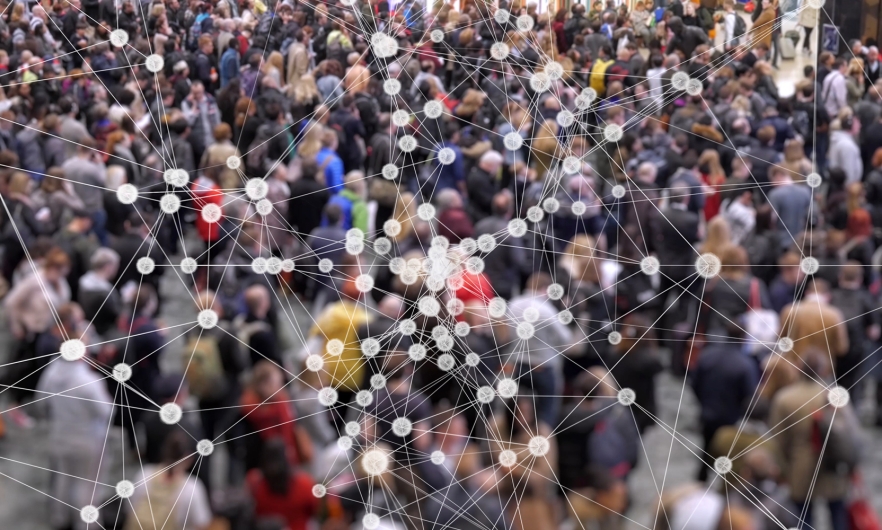Defining Disease X
Proactive planning using conceptual disease models may help prevent the next pandemic.

Public health agencies and governments across the globe are always readying their response for the next infectious disease emergency, but how do we prepare for the truly unknown? Enter Disease X.
Since 2018, this mysterious—and often misrepresented—hypothetical pathogen has been at the heart of international pandemic preparedness efforts. Planning for the emergence of an as-yet unknown infectious pathogen could mean a swifter, more effective public health response—one that readily yields the vaccines, treatments, and diagnostic tests needed to save lives.
In this Q&A, Amesh Adalja, MD, a senior scholar at the Johns Hopkins Center for Health Security, breaks down the specifics of Disease X, when and where the next potential pathogenic threat could arise, and how conceptual preparedness events could help forge new paths in pandemic prevention—and avoid repeating past mistakes.
Tell us about Disease X. How does it prepare us for future pandemics?
Secretary of Defense Donald Rumsfeld once said, there are known knowns, known unknowns, and unknown unknowns. With Disease X, we're preparing for an unknown unknown.
Disease X is a placeholder concept that refers to a pandemic pathogen that has not yet been characterized. Its purpose is to encourage proactive thinking about pathogens that could cause a pandemic. It represents a way to push people's thinking forward so that they're not wedded to lists of prior pandemic pathogens, like influenza.
There are many pathogens that have the potential to cause a pandemic that might not yet be in humans. They often come from viral families with certain characteristics that lend themselves to becoming pandemic pathogens. The concept of Disease X allows people to proactively work in those viral families, to start thinking about how they are transmitted, how they impact the human body, what types of immune responses are important. All of that can start ahead of time, which increases our resiliency because people aren’t waiting for something to first be characterized as a pandemic pathogen and start working on it.
What characteristics do researchers ascribe to Disease X?
There are definitely characteristics that would be likely—not every pathogen can cause a pandemic. In general, a few things need to be present. One, it's likely to be spread through respiration, because that's more efficient for a pathogen. People talking, laughing, coughing, sneezing—all of that is very hard for public health to intervene on, as we saw with COVID-19. It's likely to be a virus, not bacteria or fungus. It's likely to be something that could spill over from an animal species into a human. Or it could be a human pathogen that develops new characteristics or changes its genetics in such a way that makes it more conducive to causing a pandemic.
How do we convince people that Disease X is hypothetical?
The concept of Disease X has been around since at least 2018; it's not something new. This concept has already had some achievements under its belt. BioNTech and Moderna had a SARS-CoV-2 vaccine candidate ready within hours to days because of work that was done in response to the MERS epidemic in the Arabian Peninsula, like understanding how to stabilize the spike protein in order to engender the appropriate type of antibodies. Even though we didn't know SARS-CoV-2 would be a pandemic pathogen, people started to think that the coronavirus family was an important viral family to work in because of its ability to cause severe respiratory disease. All of that sped the vaccine up considerably.
The faster a vaccine, antivirals, monoclonal antibodies, and diagnostic tests are available, that trend during an infectious disease emergency translates into life saved.
Do we have any idea where and when Disease X could arise?
It could be arising right now. The human species has always been affected by infectious disease pandemics. There could be the first jumps of a virus into a human population somewhere, and maybe 90% of the people who get it have a common coldlike illness, or what appears to be garden variety pneumonia, and nobody tests for that.
And it could arise anywhere. There are places where you want to do more surveillance—where there's more human-animal interaction, where people are moving into new areas where there's more biodiversity and more microbial diversity. People immediately might think about places like Asia and Africa, where there's a lot of human-animal interaction, as hotspots, but the last pandemic prior to COVID-19—2009 H1N1 pandemic—originated in Mexico, which wasn't considered a hotspot. We have to be open to the fact that it could come from any place where there are humans, in any place where there are animals, which is basically the entire globe.
Who is involved in the preparedness planning for a Disease X pandemic?
I would say the bulk of the preparedness is happening with the WHO and other public health agencies like CDC, the European CDC, the UK Health Security Agency, as well as the Biomedical Advanced Research and Development Authority at the NIH. It involves the United Nations, and essentially all levels of government, plus business organizations like the World Economic Forum. It trickles all the way down to the state and local health department levels as well as even individual hospitals and health care facilities. It also includes pharmaceutical companies that are thinking about vaccine platform technologies and how quickly they can ramp up as necessary.
This is really multisectoral because preparedness is not just medical countermeasures, it's also societal responses and business continuity.
How prepared do you think we are now?
Are we more prepared than we were for COVID? Yes, probably. But are we fully prepared? No. Have we solved hospital capacity problems? No. Do we have domestic manufacturers of masks? No, most of them have stopped manufacturing after COVID-19 [began to subside]. Do we have a population that wants to embrace new technologies like vaccines and antivirals? No.
You can see what happened with the mpox outbreak—how many mistakes were made and how difficult it was to get testing or antivirals. All of that played a major role in how difficult it was for clinicians to actually handle people during the mpox epidemic.
What lessons from the COVID-19 pandemic could we apply to Disease X?
I think the main strength is that vaccine technologies, like the mRNA and adenovirus vaccine platforms, have the ability to really change the response time. They can speed vaccine development to less than a year. Today, organizations like CEPI [Coalition for Epidemic Preparedness Innovations] are talking about 100 Days to a vaccine.
Number two, programs like Operation Warp Speed can really incentivize pharmaceutical companies to get involved, because it is a very risky proposition for them to participate in pandemic medical countermeasure development.
Number three, the population is able to do home testing, which can be a major counter-offensive in terms of understanding who's getting infected, letting people know their infection status, and then allowing them to take protective actions.
Morgan Coulson is an editorial associate in the Office of External Affairs at the Johns Hopkins Bloomberg School of Public Health.





